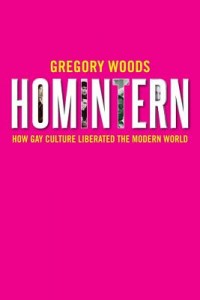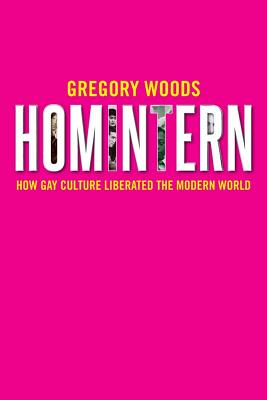 Homintern: How Gay Culture
Homintern: How Gay Culture
Liberated the Modern World
by Gregory Woods
Yale Univ. Press. 421 pages, $35.
GREGORY WOODS, Britain’s first chair in Gay and Lesbian Studies at Nottingham Trent University in 1998, has given us a densely researched account of queer cosmopolitan culture over roughly the last century plus. He uses as his book’s main title the word “Homintern”—a play on words derived from “Comintern,” the Communist International, founded by Lenin in 1919. “Homintern” was coined with camp irony in the 1930s to describe “the sprawling, informal network of friendships that Cold War conspiracy theorists would later come to think of as ‘the international homosexual conspiracy.’”
Today it may seem lunatic that anyone, let alone a closet case like J. Edgar Hoover, could believe that homosexuals were in league to take over the world—or at least the art world. Yet among cosmopolitan straights of last century’s interwar years, it may have seemed that they were the Iron Chefs in the cultural kitchen. Woods reports that the Shakespearean actor-manager Donald Wolfit, whose career ran concurrent with that of John Gielgud, once complained that “the theatre is controlled by an international cartel of poufferie!” And it remains “a standard cliché” of the history of 1930s literary England that the W.H. Auden generation—including Christopher Isherwood and Stephen Spender—were evidence “that groups of homosexual men were operating a professional bias in each other’s favour.”
Woods’ project is a daunting one: to survey in both chronological and geographic terms the flowering of “Homintern” networks, broadly defined, whose critical mass allowed their contemporaries to recognize them as a distinct community. Woods’ chapters and sub-chapters coalesce around moments in time and place—Oscar Wilde’s Victorian England, Sergei Diaghilev’s Ballets Russes in the capitals of Europe, Natalie Barney and Romaine Brooks’ Sapphic Paris of pre- and post-WWI, the Tangier of Paul and Jane Bowles and other English-speaking visitors like William Burroughs, Allen Ginsberg, and Peter Orlovsky. The scope of Woods’ project is nearly encyclopedic, its ambition laudable, its research omnivorous.
Woods’ opening chapters introduce several motifs that inform the rest of the book. Among them is the social bind in which past gay and lesbian communities managed to flourish. In the late 19th and early 20th centuries, for example, as early sexologists and political reformers took note of our presence, and as a series of scandals “brought the existence of such people out into the open,” people began to suspect that homosexuals were perhaps more numerous than once believed. In response, male and female homosexuals “had to maintain varying levels of discretion or even total secrecy about their ‘personal’ lives. This in itself was then held against them, since it began to appear that they were secretly conspiring together—to do what? To undermine the collective moral framework … or ridicule acceptable standards of behavior; even to subvert national security.”
In the main, Woods’ goal is to demonstrate how gay culture “liberated” the modern world. This was the work of those engaged in artistic occupations, mostly from the leisure classes, “where ‘bohemian’ styles and manners were acceptable,” and where male and female sexual minorities attained “higher visibility.” But this very visibility allowed for the charge that homosexuals were “exerting too much cultural influence.” For those used to navigating within artistic or sophisticated social circles, the presence of homosexuals in the cultural vanguard was “energizing, precisely because they looked at society from an unusual viewpoint.” For others, this same unusual viewpoint was unnerving, disruptive of the status quo.
Ironically, according to Woods, “a certain kind of stylish, un-masculine, arty gay man was regarded as the epitome of the modern” for decades following the Wilde trials. But, of course, the “modern” was a fraught term, depending on whether you liked its promise of social democratization or despised its apparent libertinism. One could similarly argue that the garçonne lesbian style in Paris of the 1920s was regarded as a fashionable signifier of the modern woman—especially since not all who adopted short haircuts and tailored clothes proved to be Sapphic, but were reacting to the reshuffling of gender roles during and after the Great War. But modernity had its dark side for homosexuals, who were marked as rootless and more strongly allied to their own tribe than to their nation of origin. (Sound familiar?) This produced a “paranoid association of homosexuality with espionage” and, as Woods reasonably argues, made “the cosmopolitanism of homosexual people … thought similar to, and congruent with, that of the Jews.” Ah, yes, the rootless foreign Jew, conspiring with his own kind: think Dreyfus Affair, which coincidentally erupted in the same year as the Oscar Wilde trials.
But it would be wrong to think that Homintern is a book exclusively devoted to theorizing about the status of homosexuals in Europe. In fact, it sometimes reads as a high-class gossipy travelogue, with all the incidental color and notable queer characters that such a journey implies. Of Tangier, to which Gertrude Stein had first recommended that Paul Bowles travel in 1931, writer–composer Bowles wrote: “It was one of the charms of the International Zone that you could get anything you wanted if you paid for it. Do anything, too, for that matter—there were no incorruptibles. It was only a question of price.” Drugs and adolescent prostitutes were two of the popular commodities among expatriate Europeans and Americans, but even playwright Joe Orton discovered after a stay of several weeks that “sex with teenage boys had become monotonous.” Others might live in coupled seclusion entertaining visitors from abroad.
The Isle of Capri offered similar diversions, its magnetic pull for the “Homintern … and an international community, not only of boy-loving men but of lesbian women,” dating from the late 19th century. When the lesbian American painter Romaine Brooks dispensed with her gay husband John Ellingham Brooks after inheriting her mother’s fortune, the regular stipend she offered enabled him to live comfortably at the popular watering hole where “sexual relations between men had been decriminalized in 1891”—at least so long as one exercised discretion. The German arms manufacturer Friedrich Alfred Krupp became an honorary citizen of Capri after building good public roads and a public park, while his private preoccupations included orgies at his villa where “it is said, every ejaculation was celebrated with fireworks.”
Such tales, apocryphal or not, may have provided fodder for small and large scandals, yet portray the frivolity of privileged lives lived far from the restrictive demands of many a Homintern’s native homeland. For gay men and lesbians of means, expatriation to warmer Mediterranean climes with sultrier moral attitudes was a price worth paying. Woods’ final chapter, however, “The New Politics,” deals perceptively with the tensions between those public figures (artists, writers, etc.) who compartmentalized their homosexuality and a younger cohort of queers whose determination to “come out” forced a moral quandary onto the older generation, who often decided in favor of respectability and discretion.
This may not be the book for the period specialist—those, for example, deeply immersed in the subterranean byways of Weimar Berlin, “Lost Generation” Paris, or the London of the Bright Young Things. They may find Woods’ approach too anecdotal, a glittering surface that is insufficiently deep. What Woods provides, however, is a broad synthesis of much of the literature, including historical scholarship, novels, essays, poetry, memoirs, and quantities of queer biography. His is a balanced interdisciplinary approach, grabbing testimony from a wide range of sources in manifold genres.
Allen Ellenzweig is writing a biography of celebrity portrait and male nude photographer George Platt Lynes (1907-1955).






